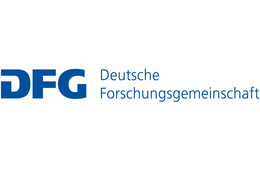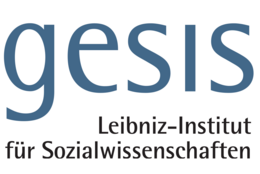Gender-equitable appointment procedures
TU Dortmund University sees it as an important task to attract highly qualified women to professorships in its departments and to sustainably increase the proportion of women in professorships.
A gender-equitable design of appointment procedures is of central importance here. In all phases of the appointment procedure, care is taken to ensure that applicants with comparable qualifications are also given equal opportunities. The excellent academic performance of applicants is the main criterion for selection and subsequent appointment at TU Dortmund University. This approach also ensures that the procedures are gender-equitable.
TU Dortmund University signs voluntary commitment to greater gender equality in appointments
In June 2024, Rector Prof. Dr. Manfred Bayer signed the voluntary commitment "More gender equality in appointments". The voluntary commitment is based on a resolution of the German Rectors' Conference (HRK) Members' Assembly, in which concrete goals and fields of action as well as measures that can contribute to the realization of an institutional cultural and structural change towards more gender equality at universities are named. In doing so, the universities united in the HRK want to reaffirm their will to take the necessary steps to achieve and ensure appropriate gender representation across all subjects and levels in the long term. The Rector explicitly emphasizes that he fully supports the five goals defined in the voluntary commitment:
- Active recruitment to expand the pool of candidates
- Gender-equitable appointment procedures
- Establishment of more gender-equitable remuneration structures
- Institutional anchoring of gender sensitization and gender competence
- Institutional monitoring
On the HRK resolution (in German)

Transparency for applicants and appointment committees

TU Dortmund University's appointment portal gives applicants an insight into the specific appointment process at TU Dortmund University. It also provides information and handouts for everyone involved in the appointment process.
Gender-equitable design of appointment procedures
Gender-equitable behavior on the part of the key players in an appointment process presupposes that evaluation patterns are reflected upon. Knowledge about their own gender-stereotypical thought patterns and about the gender-specific behavior of the persons under consideration, i.e. the applicants (gender competence), helps here.
In appointment procedures, two phenomena in particular can influence the decision on candidates in a gender-relevant way: gender bias and homosocial co-optation.

In common English usage, a bias is a distorted perception. Gender bias therefore describes distortions in perception or bias towards women or men based on their gender. In appointment procedures, gender bias can have a positive or negative influence on performance evaluation. Effective role models and stereotypes, in combination with gender, usually have a subconscious effect on a judgment. Studies on the topic of performance evaluation and gender have shown, for example, that identical CVs were evaluated differently by test subjects depending on whether they were submitted under a male or female name. Significantly more test subjects of both genders rated the performance of men as better and tended to want to hire the man rather than the woman despite identical application documents (Landeskonferenz der Gleichstellungsbeauftragten an den wissenschaftlichen Hochschulen Baden-Württembergs (LaKoG), 2011: Faire Berufungsverfahren - Empfehlungen zur Qualitätssicherung und Chancengleichheit: 18ff).
Another gender-specific mechanism is so-called homosocial cooptation. Homosocial co-optation refers to the tendency to primarily accept members into an existing network who are seen as "socially similar". Social similarity can exist or be sought in many respects. In addition to characteristics such as social milieu, ethnicity or scientific community, gender is a relevant criterion. Personnel decisions are therefore influenced by social similarities; this does not require a strategic decision to specifically exclude women, for example. The structural dominance of men in organizations in conjunction with the unconscious practice of homosocial co-optation means that a male-dominated structure persists (Wissenschaftsrat 2007, Recommendations on equal opportunities for female and male scientists: 23ff) (in German).
Further information
Opportunities to proactively search for female professors
A compilation and overview for the proactive search for potentially suitable female candidates for professorships. Status 09/2024
To the proactive search (in German)
Publications
- HRK, 2024: Auf dem Weg zu mehr Geschlechtergerechtigkeit bei Berufungen – Selbstverpflichtung der deutschen Hochschulen PDF (2 MB)
- Deutsche Forschungsgemeinschaft, 2017: Forschungsorientierte Gleichstellungsstandards PDF (199 KB)
- Hochschulrektorenkonferenz, 2015: Gendergerechte Führungskultur an Hochschulen PDF (2 MB)
- Wissenschaftsrat, 2012: Fünf Jahre Offensive für Chancengleichheit von Wissenschaftlerinnen und Wissenschaftlern - Bestandsaufnahme und Empfehlungen. PDF (251 KB)
- LaKoG Baden-Württemberg, 2011: Faire Berufungsverfahren - Empfehlungen zur Qualitätssicherung und Chancengleichheit. PDF (681 KB)
- Wissenschaftsrat, 2007: Empfehlungen zur Chancengleichheit von Wissenschaftlerinnen und Wissenschaftlern. PDF (468 KB)
- HRK, 2006: Frauen fördern, Empfehlung zur Verwirklichung von Chancengleichheit im Hochschulbereich. PDF (371 KB)










